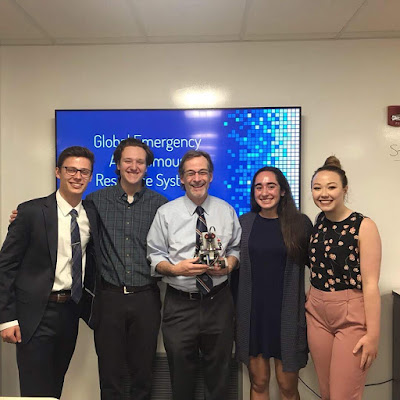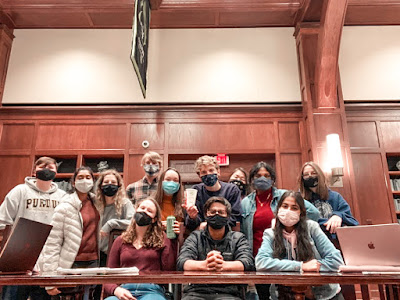Learn More About the Honors Engineering Program
As a freshman in Purdue Engineering, you are required to go through the First Year Engineering (FYE) curriculum, and there are several different pathways you can take to complete your first year (as described in the previous post). The final option not mentioned in the blog post from November 3rd is the Honors Engineering Program. In order to complete the Honors Engineering Program, you must be enrolled in the Honors College, which has a separate application, or you can be a Goss Scholar. After you have been accepted into Purdue’s FYE program, you can apply to be a Goss Scholar, and you will be placed in a learning community for your first year. You do not have to be in the Honors College to be a Goss Scholar, but if a student majoring in engineering is accepted into the Honors College, then they are automatically considered a Goss Scholar.
First-year students in Goss Scholars most commonly take ENGR 161/162 (Introduction to Innovation and the Physical Sciences of Engineering Design 1 & 2). Through homework and design challenges, you develop engineering approaches to problems and generate creative ideas & solutions to real world issues. By taking ENGR 161/162, you also get credit for PHYS 172, thus satisfying the FYE physics requirement, because the material is built into the course. You learn principles such as vector analysis, linear/angular momentum, and work-energy. In the first semester of Honors Engineering, you learn how to code in Python, and in the second semester, MATLAB. From these two skills, you learn not only physics and how to code, but also descriptive statistics, data analysis, sensitivity analysis, and decision making.
 |
| My ENGR 162 team (I’m second from the right) in spring 2019 with our professor, Dr. Brophy, holding the robot we made after giving our final presentation for the class. |
One aspect I loved about the classes is that the projects and homework were focused on real world issues, which allowed me to see the applications of the content I was learning and gave more meaning to the work I did in the classroom. One example of a project I did freshman year was my team and I (pictured above) had to assemble an autonomous, small-scale prototype vehicle using Lego Mindstorms to navigate natural disaster zones and provide aid to survivors. We had to implement PID control algorithms and sensor filters in Python to correctly map unknown terrain, traverse obstacles, regulate speed, and deliver cargo to a designated drop zone.
Overall, Honors Engineering is a challenging route, but a rewarding one. You are introduced to the engineering profession by familiarizing yourself with working effectively in teams and understanding the engineering design process. You also develop skills in project management, engineering fundamentals, and professional writing/presenting. Oftentimes, once you’ve experienced the rigor of ENGR 161/162, your future major-specific classes don’t seem as hard because you’ve become accustomed to the difficulty.
Sonya Dervishian, Biological Engineering 2022
Recruitment Project Committee
Stay Connected With Purdue WIEP!
Facebook: Purdue Women in Engineering
Twitter: @purduewiep
Instagram: @purduewiep
Blog: purduewiep.blogspot.com
Email: welink@purdue.edu
Use the hashtag #PurdueWIEP on Facebook, Instagram and Twitter!



Comments
Post a Comment